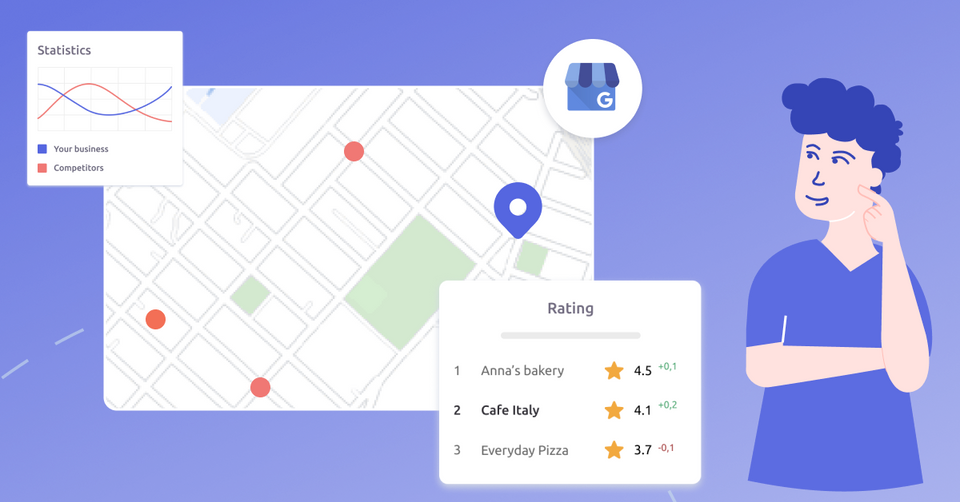The telecommunications sector in the Gulf Cooperation Council (GCC) countries is undergoing rapid digital transformation. With a high mobile and fierce competition among operators, ensuring a strong digital presence and reputation is more critical than ever. Consumers increasingly rely on online channels, such as Google Maps, search engines, and social media, in order to evaluate telecom brands before making decisions. Meanwhile, customer experience (CX) has become a defining factor, with seamless omnichannel interactions and prompt responses to reviews influencing brand perception and loyalty.
Key trends and statistics highlight the importance of these factors:
- Digital engagement in GCC is at an all-time high. Internet penetration in Saudi Arabia has reached 99%, and smartphone penetration in the UAE exceeds 97%. By 2030, 5G adoption in the region is expected to reach 93%, outpacing global averages and further driving digital engagement.
- Customer expectations have shifted toward seamless digital experiences. According to KPMG, 96% of companies in GCC consider CX improvement their top priority
- Reputation influences operator choice. While trust in telecom brands is improving (23% of global consumers say the industry's reputation has strengthened over the past five years), customer confidence remains moderate and lower than in banking or pharmaceuticals. Negative reviews about billing issues, service disruptions, or poor customer support can significantly impact a brand’s image.
In addition to the above-mentioned omnichannel trends there are other important market tendencies:
- The GCC telecom market will continue to grow from USD 76.13 billion in 2024 to USD 128.67 billion by 2029, reflecting a compound annual growth rate (CAGR) of 11.07%
- Growth in sectors like e-commerce and retail will drive telecom providers to enhance their capabilities further.
Thus, telecoms will need to significantly enhance their digital strategy. And Google Maps could not be omitted, as Google is responsible for 96% of online traffic in GCC. To ensure accurate store listings on Google Maps, effectively manage customer feedback on review platforms, and enhance local search visibility, telecoms need a strategic approach to digital location management. With that being said, let’s deep dive into our findings.
Which Telecoms are going to be analyzed?
Our research analyzes the online presence of 13 leading telecoms across 6 GCC countries: Saudi Arabia, UAE, Bahrain, Oman, Kuwait, and Qatar. We analyzed a robust dataset of 2 587 Google Maps locations, 478 144 reviews, and 62 268 photos. We prioritized the largest GCC telecoms by location count, as their expansive store networks offer key insights into regional trends while ensuring a balanced representation across all GCC countries.
GCC telecom providers have significant opportunities to enhance their Google Maps presence, with 30% of the analyzed companies missing essential business information. Our assessment of key data fields included address, phone number, category, photos, website, description, and attributes. Additionally, many telecom providers are not actively managing customer reviews and have numerous unclaimed profiles. Out of 2 587 Google Maps locations, 629 (24.3%) are not directly managed by the brand, which can lead to issues such as customers visiting incorrect locations or facing service disruptions due to inaccurate business hours.
The average data completeness for GCC telecoms stands at 70%, with many missing critical details. For example, 694 locations (26.8%) lack website information, while 584 locations (22.6%) are missing telephone numbers. This reinforces the earlier finding that a significant number of physical locations are not directly managed by the brand, potentially causing customers to visit incorrect addresses or arrive outside of operating hours, leading to frustration. Additionally, many locations are also missing key business attributes and descriptions.
The average rating across analyzed telecom locations is 3.7, based on 478 144 reviews, which still has significant room for improvement. 1 791 locations (69.2%) have ratings between 1.0 and 3.9, only highlighting improvement possibilites. Additionally, 260 locations (10.1%) have no ratings at all, signaling low customer engagement and potentially impacting their online reputation.
For telecom providers focused on local SEO, prioritizing these locations can yield quick wins, as even a small rating increase of 0.1 can boost conversions by 25%. Enhancing customer engagement and review management can significantly improve search engine visibility.
Across the analyzed telecom locations, we identified 62 268 photos, indicating strong social engagement. However, many of these images were irrelevant, highlighting the need for telecom providers to focus more on this area. Notably, 1 006 locations (38.9%) have fewer than three photos, which can negatively impact customer engagement, as locations with updated and relevant visuals are viewed 15% more often.
To strengthen their online presence, telecom providers should prioritize uploading high-quality, relevant photos while actively flagging and removing irrelevant ones.
GCC Local Search Trends for Telecom
Through an in-depth analysis of the statistics above, we identified local search trends across GCC countries, including Bahrain, Kuwait, Oman, Qatar, Saudi Arabia, and the United Arab Emirates. These insights were compiled into the Geojet Performance Index, which you can explore on the map below.
The Geojet Performance Index is calculated based on seven key metrics:
- Verified locations
- Data completeness
- Ratings
- Reviews per Location
- Photos per Location
- Number of locations
- Population
By prioritizing the first five metrics, telecoms can significantly boost their Performance Index. Let’s dive into why these factors matter and how to optimize them.
- Verified locations are crucial for establishing trust and credibility. A verified business reassures customers that the information is accurate and legitimate. Given its strong influence on customer trust and decision-making, this metric carries the highest weight. Kuwait leads in the verified locations metric, with brands claiming 90% of locations.
- Data completeness is essential for helping customers make informed decisions. Incomplete profiles can lead to confusion and reduce trust. To reflect its importance, this metric also holds a high weight. Saudi Arabia leads in data completeness, with 72% of telecom companies providing full business information.
- Ratings provide direct insight into customer satisfaction and overall experience. While businesses cannot directly control their ratings, maintaining high ratings is key to building a strong reputation and attracting new customers. Monitoring and improving this metric is vital. Saudi Arabia, Qatar, and Oman lead in customer ratings, both with an average rating of 3.5.
- Reviews serve as a valuable indicator of customer engagement and feedback. While the quantity of reviews matters, their quality has a greater impact. This metric is assigned moderate weight, recognizing its significance without overemphasizing it. However, actively managing and responding to reviews can indirectly influence ratings. Saudi Arabia leads in customer reviews, which is expected given its status as the largest country in the region.
- Photos help customers visualize telecom facilities and services, playing a role in their decision-making process. Although they contribute to the overall perception of a business, they are just one piece of the puzzle. As such, this metric is weighted moderately. Nonetheless, businesses should upload relevant photos to enhance their online presence and customer experience. Saudi Arabia leads in terms of photos with 35 873, demonstrating high customer engagement.
- Number of locations is a less influential metric. While ensuring all physical locations are accurately listed online is important, once this is done, the focus should shift to maintaining high-quality information and managing customer interactions.
- Population has the least impact on the index. Since businesses cannot influence this factor, it primarily serves to provide context and balance data analysis between countries with varying population sizes, such as Saudi Arabia and the UAE. It should be considered as a complementary metric rather than a core driver of performance.
Among brands that take care of these issues properly we can suggest to take a look at Etisalat.
Conclusion
Assessing the digital footprint of the GCC’s telecom sector is a complex challenge. This study highlights key obstacles by analyzing telecom providers’ presence on Google Maps using various performance metrics. With insights from the Performance Index, telecom operators now have a clear strategy to enhance their visibility and effectiveness on Google Maps. Notably, 6 out of 7 key metrics can be easily managed through the Geojet dashboard.
While our analysis primarily focused on Google Maps, telecom providers in the GCC should also consider alternative platforms such as Bing Maps and Yango Maps. Yango Maps, in particular, deserves special attention, as Yandex, being the world’s third-largest search engine, is making significant investments in the region. When properly managed, online maps can be a powerful tool for attracting customers and resolving service-related concerns. However, poor oversight of map listings and customer reviews can pose serious risks to a brand’s reputation, as demonstrated in this study.
We at Geojet know how to achieve that and were able to drive the following results for some of our telecom clients:
- x2 increase in created routes on online maps
- 22.84% conversion from views to actions
- 40% increase in replied reviewsThis research focused on telecom providers, and further analysis covering other industries is on the way.
If you’d like to see similar insights tailored to your business, reach out to us at [email protected] or contact us via chat.





